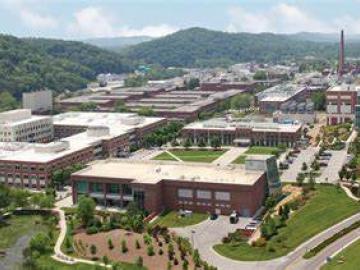Filter News
Area of Research
- Advanced Manufacturing (23)
- Biological Systems (1)
- Biology and Environment (55)
- Building Technologies (3)
- Clean Energy (131)
- Computational Biology (2)
- Computational Engineering (1)
- Computer Science (2)
- Energy Sciences (1)
- Fusion and Fission (10)
- Fusion Energy (9)
- Isotopes (5)
- Materials (68)
- Materials for Computing (13)
- National Security (12)
- Neutron Science (99)
- Nuclear Science and Technology (19)
- Nuclear Systems Modeling, Simulation and Validation (1)
- Quantum information Science (1)
- Supercomputing (36)
News Type
News Topics
- (-) 3-D Printing/Advanced Manufacturing (106)
- (-) Advanced Reactors (29)
- (-) Biomedical (54)
- (-) Neutron Science (119)
- (-) Sustainable Energy (110)
- Artificial Intelligence (78)
- Big Data (43)
- Bioenergy (85)
- Biology (92)
- Biotechnology (19)
- Buildings (45)
- Chemical Sciences (52)
- Clean Water (28)
- Climate Change (85)
- Composites (23)
- Computer Science (171)
- Coronavirus (45)
- Critical Materials (22)
- Cybersecurity (34)
- Decarbonization (63)
- Education (3)
- Element Discovery (1)
- Emergency (2)
- Energy Storage (98)
- Environment (175)
- Exascale Computing (31)
- Fossil Energy (4)
- Frontier (34)
- Fusion (49)
- Grid (56)
- High-Performance Computing (74)
- Hydropower (11)
- Irradiation (2)
- Isotopes (44)
- ITER (7)
- Machine Learning (41)
- Materials (128)
- Materials Science (117)
- Mathematics (6)
- Mercury (12)
- Microelectronics (2)
- Microscopy (46)
- Molten Salt (8)
- Nanotechnology (54)
- National Security (49)
- Net Zero (10)
- Nuclear Energy (92)
- Partnerships (37)
- Physics (53)
- Polymers (27)
- Quantum Computing (28)
- Quantum Science (61)
- Renewable Energy (2)
- Security (22)
- Simulation (39)
- Software (1)
- Space Exploration (24)
- Statistics (2)
- Summit (55)
- Transformational Challenge Reactor (7)
- Transportation (85)
Media Contacts

ORNL researchers modeled how hurricane cloud cover would affect solar energy generation as a storm followed 10 possible trajectories over the Caribbean and Southern U.S.

Rishi Pillai and his research team from ORNL will receive a Best Paper award from the American Society of Mechanical Engineers International Gas Turbine Institute in June at the Turbo Expo 2024 in London.

ORNL’s Erin Webb is co-leading a new Circular Bioeconomy Systems Convergent Research Initiative focused on advancing production and use of renewable carbon from Tennessee to meet societal needs.

An international team using neutrons set the first benchmark (one nanosecond) for a polymer-electrolyte and lithium-salt mixture. Findings could produce safer, more powerful lithium batteries.

Jens Dilling has been named associate laboratory director for the Neutron Sciences Directorate at the Department of Energy’s Oak Ridge National Laboratory, effective April 1.

Scientists at ORNL have developed 3D-printed collimator techniques that can be used to custom design collimators that better filter out noise during different types of neutron scattering experiments

ORNL hosted the second annual Appalachian Carbon Forum in Lexington March 7-8, 2024, where ORNL and University of Kentucky’s Center for Applied Energy Research scientists led discussions with representatives from
ORNL scientists have determined how to avoid costly and potentially irreparable damage to large metallic parts fabricated through additive manufacturing, also known as 3D printing, that is caused by residual stress in the material.

Astrophysicists at the State University of New York, Stony Brook and University of California, Berkeley, used the Oak Ridge Leadership Computing Facility’s Summit supercomputer to compare models of X-ray bursts in 2D and 3D.
The United States could triple its current bioeconomy by producing more than 1 billion tons per year of plant-based biomass for renewable fuels, while meeting projected demands for food, feed, fiber, conventional forest products and exports, according to the DOE’s latest Billion-Ton Report led by ORNL.




